
How to Use 4 Solid State Relay: Examples, Pinouts, and Specs
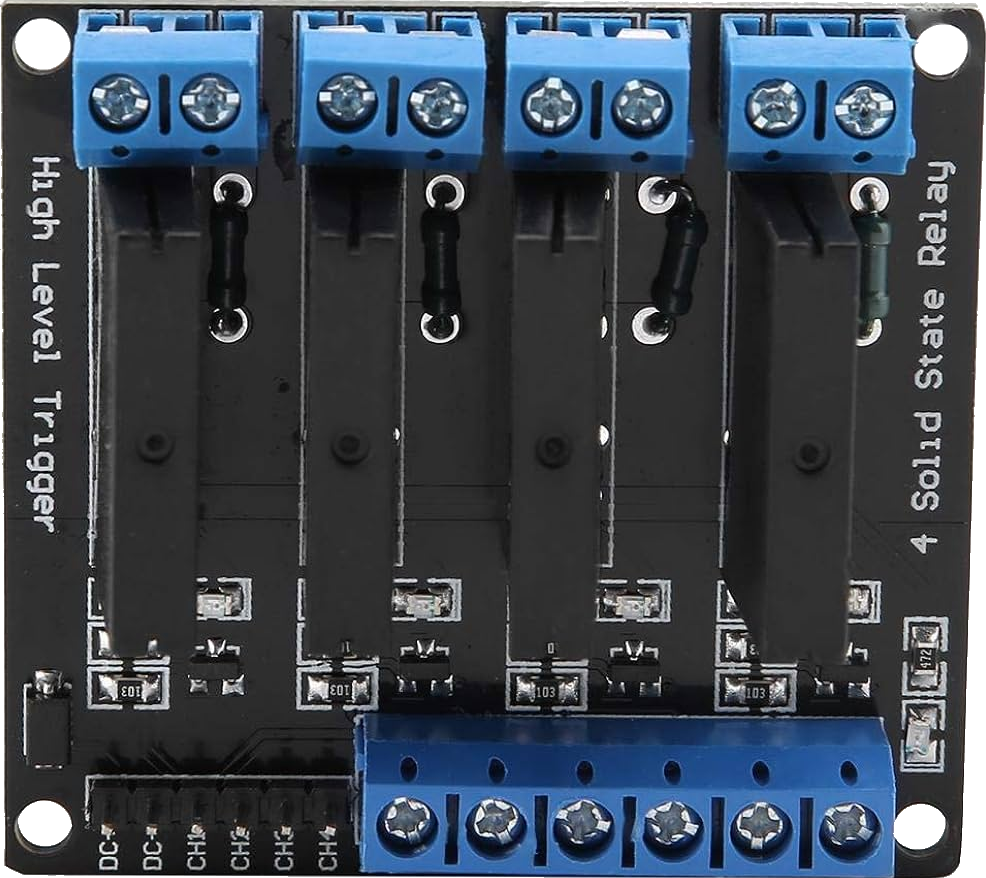
 Design with 4 Solid State Relay in Cirkit Designer
Design with 4 Solid State Relay in Cirkit DesignerIntroduction
A 4-Channel Solid State Relay (SSR) module is an electronic switching device that allows for the control of high power devices using low voltage signals. Each channel of the SSR module can be controlled independently, making it suitable for applications that require multiple high-power outputs to be controlled simultaneously. Common applications include industrial automation, home automation, and any project requiring the interfacing of a microcontroller, like an Arduino, with high-power electrical loads.
Explore Projects Built with 4 Solid State Relay
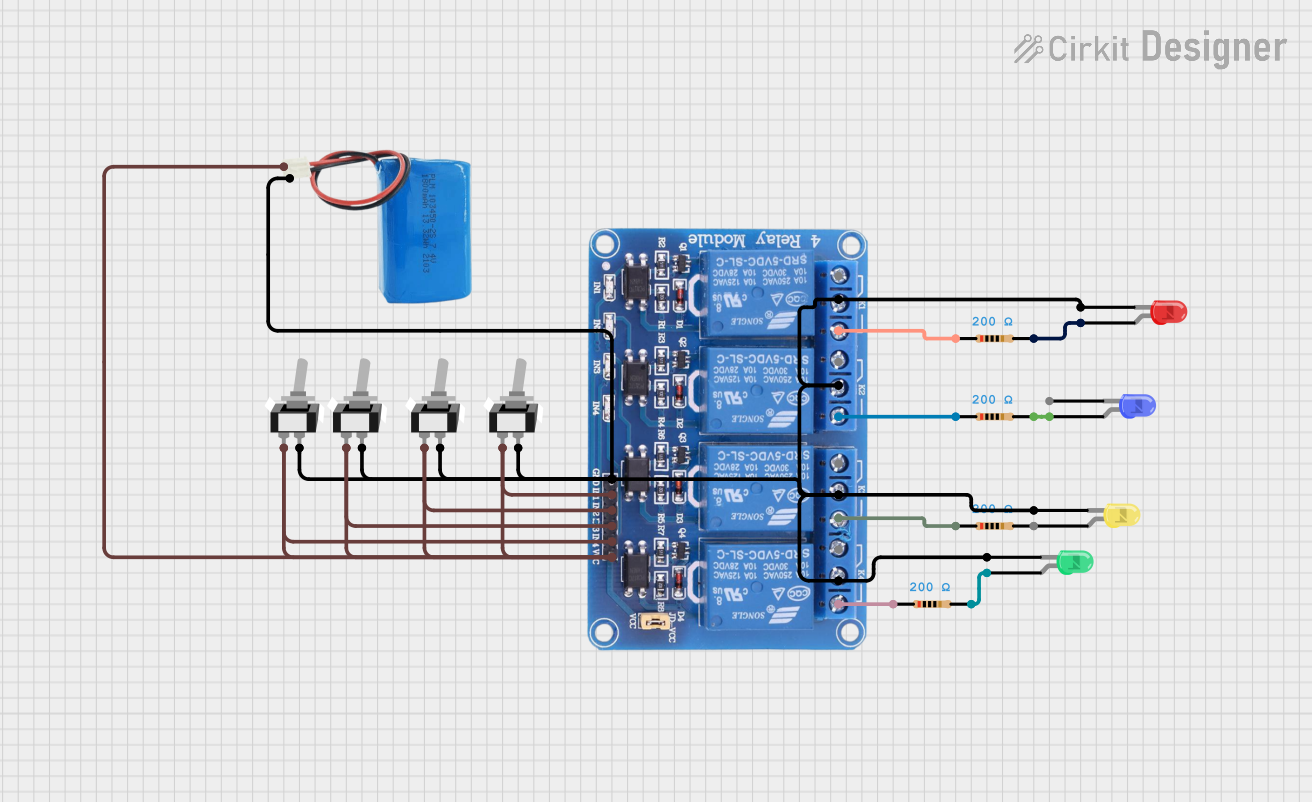
 Open Project in Cirkit Designer
Open Project in Cirkit Designer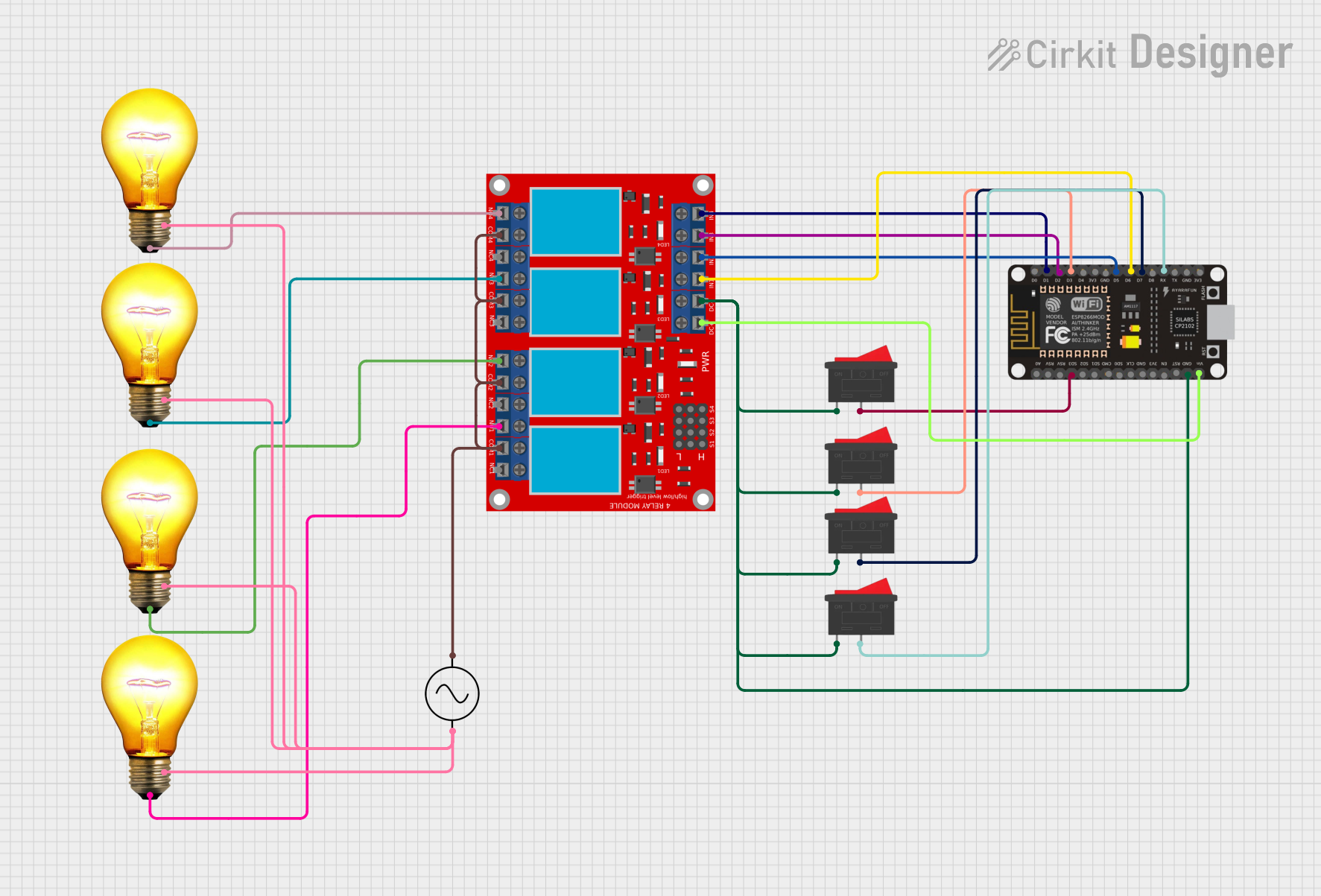
 Open Project in Cirkit Designer
Open Project in Cirkit Designer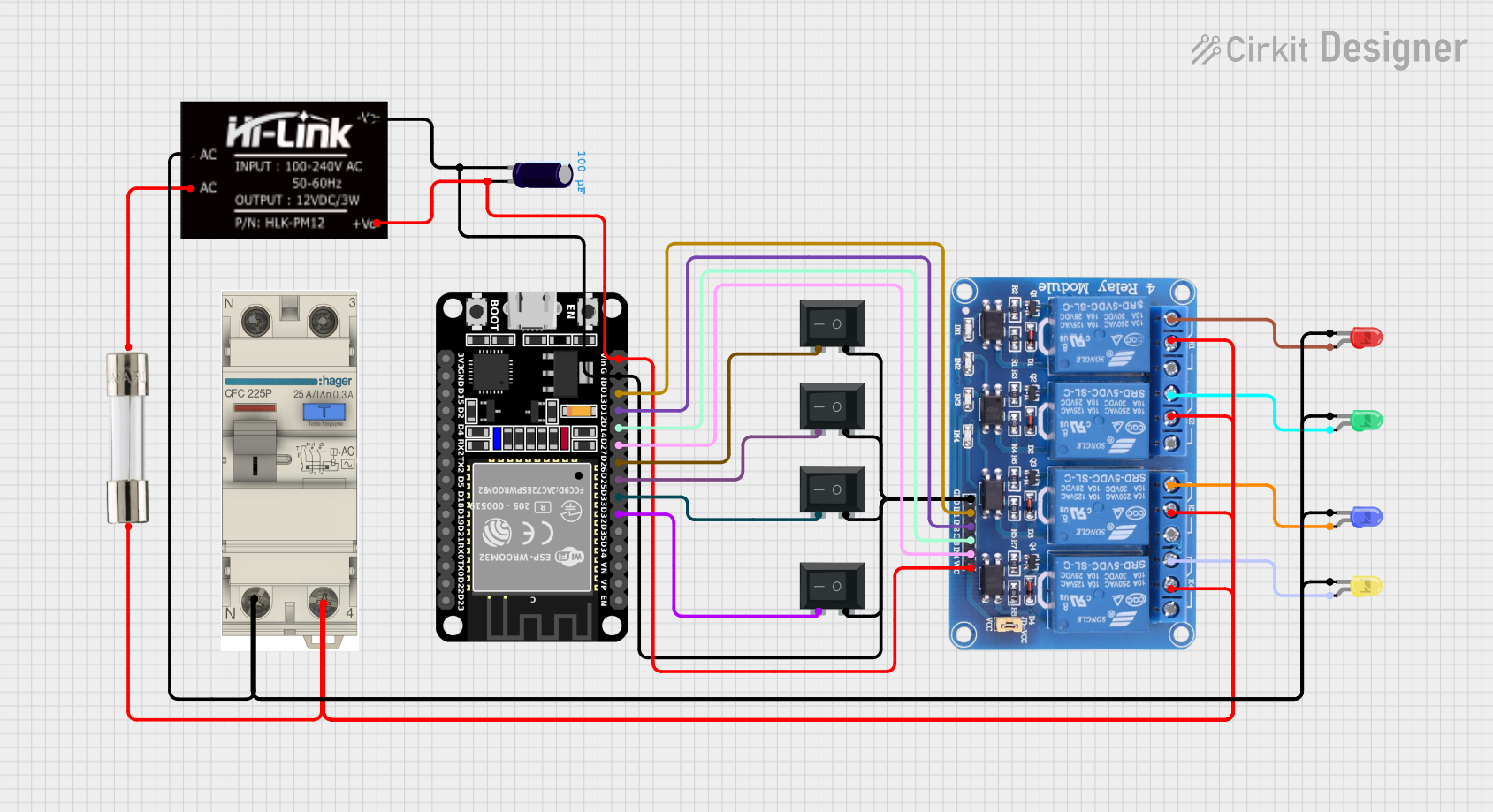
 Open Project in Cirkit Designer
Open Project in Cirkit Designer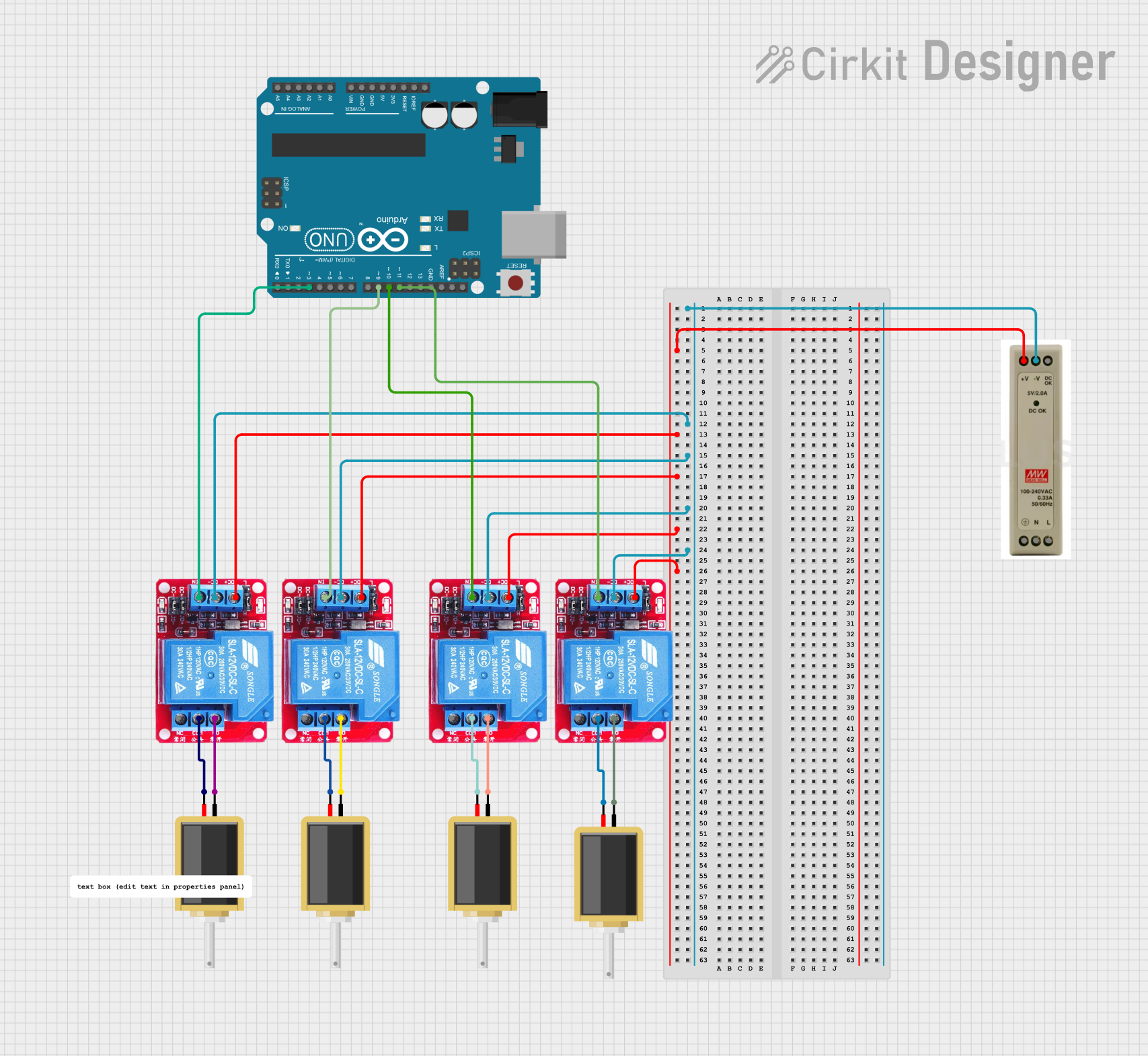
 Open Project in Cirkit Designer
Open Project in Cirkit DesignerExplore Projects Built with 4 Solid State Relay

 Open Project in Cirkit Designer
Open Project in Cirkit Designer
 Open Project in Cirkit Designer
Open Project in Cirkit Designer
 Open Project in Cirkit Designer
Open Project in Cirkit Designer
 Open Project in Cirkit Designer
Open Project in Cirkit DesignerTechnical Specifications
General Features
- Number of Channels: 4
- Input Control Voltage: 3-32V DC
- Output Voltage: 24-380V AC
- Current Rating: Up to 2A per channel
- Zero-crossing: Yes (typically for resistive loads)
- Isolation: Opto-isolation between input and output stages
Pin Configuration and Descriptions
| Pin Number | Description | Notes |
|---|---|---|
| 1 | Input 1 (IN1) | Control signal for Relay 1 |
| 2 | Input 2 (IN2) | Control signal for Relay 2 |
| 3 | Input 3 (IN3) | Control signal for Relay 3 |
| 4 | Input 4 (IN4) | Control signal for Relay 4 |
| 5 | Ground (GND) | Common ground for input signals |
| 6 | VCC | Input voltage for the module |
| 7-10 | Output Terminals (1-4) | AC load connections |
Usage Instructions
Connecting to a Circuit
- Connect the VCC pin to a 5V supply from the microcontroller board.
- Connect the GND pin to the common ground of the system.
- Connect the IN1, IN2, IN3, and IN4 pins to the digital output pins of the microcontroller.
- Connect the high-power AC load to the output terminals of each channel.
Best Practices
- Ensure that the load does not exceed the specified maximum current rating.
- Use proper heat dissipation methods if operating near the maximum current rating.
- Always ensure that the AC power is disconnected before making any connections to the output terminals.
- Use appropriate wire gauge for the AC side to handle the current without overheating.
Example Code for Arduino UNO
// Define the control pins for the SSR channels
const int ssrPin1 = 2;
const int ssrPin2 = 3;
const int ssrPin3 = 4;
const int ssrPin4 = 5;
void setup() {
// Set the digital pins as outputs
pinMode(ssrPin1, OUTPUT);
pinMode(ssrPin2, OUTPUT);
pinMode(ssrPin3, OUTPUT);
pinMode(ssrPin4, OUTPUT);
}
void loop() {
// Turn on each SSR channel for 1 second, then off for 1 second
digitalWrite(ssrPin1, HIGH);
delay(1000);
digitalWrite(ssrPin1, LOW);
digitalWrite(ssrPin2, HIGH);
delay(1000);
digitalWrite(ssrPin2, LOW);
digitalWrite(ssrPin3, HIGH);
delay(1000);
digitalWrite(ssrPin3, LOW);
digitalWrite(ssrPin4, HIGH);
delay(1000);
digitalWrite(ssrPin4, LOW);
// Repeat the cycle
delay(1000);
}
Troubleshooting and FAQs
Common Issues
- SSR Not Activating: Check the input control voltage and connections. Ensure that the control signal is within the specified range.
- Overheating: Ensure that the current through the SSR does not exceed the rated value. Check for adequate heat dissipation.
- Unexpected Behavior: Verify that the zero-crossing feature is suitable for the type of load being controlled.
FAQs
Q: Can I use the SSR module with a DC load? A: This SSR module is designed for AC loads. Using it with a DC load may damage the module.
Q: Is it necessary to use a heat sink with the SSR? A: It depends on the current being switched and the ambient temperature. If operating near the maximum rating, a heat sink is recommended.
Q: Can I control the SSR module with a 3.3V logic level? A: Yes, the input control voltage range typically allows for 3.3V logic levels, but always check the specifications of your particular module.
Q: How do I know if the SSR is on or off? A: Some SSR modules have an LED indicator for each channel. If the LED is on, the corresponding relay channel is activated.
Remember to always follow safety precautions when working with high voltage and consult a professional if you are unsure about any aspect of working with electrical components.